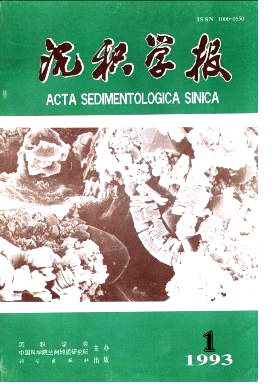Composition and Physicochemical Features of the Seafloor Sediments in the Eastern Pacific Ocean
- Received Date: 1991-03-30
- Publish Date: 1993-03-10
Abstract: The study area is located at 7° -15 ° N, 13 ° 845 ' -153 ° 30 ' W, that is , at the northern edge of the radiolaria-rich zone in the Eastern Pacific Basin. To the east, it bordered with the Eastern Pacific Seamounts; to west, with the Clarion Transform Fault, and to South, with the Clipperton Transform Fault. Seafloor topography in this region mainly strikes NEE-SWW and is distributed in zonation. The relief appears high on the east and low on the west, steep on the north and gentle on the south. Seafloor sediments there chiefly include deep-sea siliceous clay, siliceous ooze, Si-bearing calcareous ooze, calcareous ooze and Ca-bearing sililceous ooze, among which siliceous ooze is most widely distributed, covering about 50% of the area. Based on fossil identification, palaeomagnetic measurement and 10Be determination of seafloor sediments in the Eastern Pacific Ocean, we come to conclude that these sediments are mainly of Quartemary age. Lower Miocene of the upper Tertiary is only locally exposed in southwestern part of the study area, whilst Oligocene is only sparsely seen at the northwestern sector. The identification of calcareous nanofossils and foraminifera in the seafloor sediments suggests a carbonate compensation depth (CCD) of 4, 800-4, 900m. Through studies of seafloor sediments in the Eastern Pacific Ocean, the author found that: 1) These sediments are mainly composed of minerals less than 0.063mm in grain size, such as illite, montmorillonite+mixed mineral layers, kaolinite, clayey green earth minerals, radiolaria and diatoms etc.. Their average grain size ( M1) ranges between 7. 49- 12. 21p and medial grain size (p50) between 7.11-9.44p, which indicates a fine silt and clay grade. The dispersion degree (δ1) is between 1.27-16.67. 2) Chemical composition of these sediments mainly include SiO2 , A12O3, Na2O, K2O, CaO and MgO among which SiO2 (48.55%) and A12O3(11.69%) are dominant, totalling up above 60%. The content and composition of dissoluble salts in the seafloor sediment of the study area is not only dependent on the composition of sediments but also closely related to CCD in the region. 3) pH values of the seafloor sediments in the area all exceed 7, thus indicating an alkaline nature. A diffusive double-electric films are usually developed on the soil-grain surface of sediments with such a feature, that turns those sediments into a dispersive state. 4) As seafloor sediments in the study area are characterized by such a -lay mineral assemblage with dominant illite and montmorillonite+mixed mineral layers and some kaolinte and green earth, their ion exchange volume is generally between 45.98-65.09me / 100g, which is larger than 10-40me / 100g of the illite and smaller than 80-150me /100g of the montmorillonite. Same as those of other marine sediments, these ions include Ca2+, Mg2+, K+ and Na+. 5) Because of their above-mentioned features, seafloor sediments in the study area hold a relatively high and changeable surface ratio values ranging between 93.81-157.48m2 / g, which again run intermediate compared with the surface ratio of montmorillonite clay ( 810m2/ g) and that of illite clay (67-100m2/g)
| Citation: | Niu Zuomin. Composition and Physicochemical Features of the Seafloor Sediments in the Eastern Pacific Ocean[J]. Acta Sedimentologica Sinica, 1993, 11(1): 121-127. |






 DownLoad:
DownLoad: